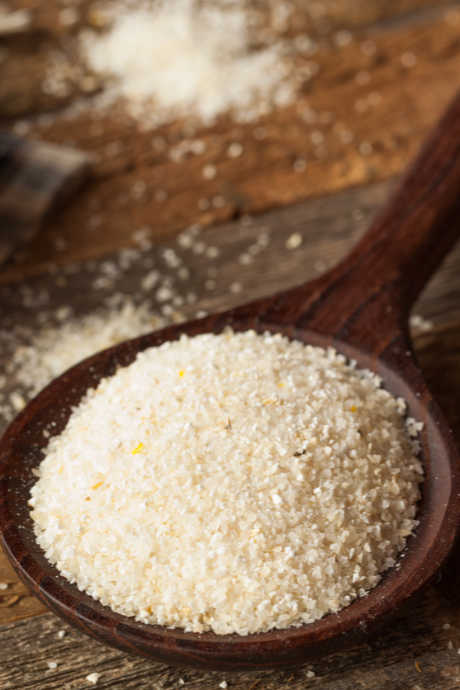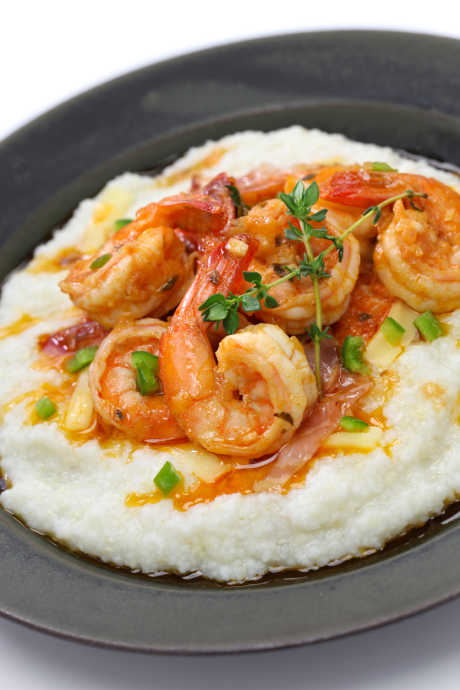Eat These Grits: Southern-Style Cooking for Everyone
Posted by Julie on Jun 24th 2019
As far and wide as Southern-style cooking has spread, many people are still unfamiliar with grits. While you’re likely to find them incorporated into more and more dishes at gourmet eateries, few of us outside the South whip up a pot of grits at home. This post may entice you to give this Southern staple a try, no matter where your kitchen is located.
The History of Grits
Grits are a hallmark of Southern cooking. As the British colonized the area that became the southern United States, Native Americans introduced them to this dish made from ground dried corn. In fact, one man from Sir Walter Raleigh’s expedition, Arthur Barlowe, documented his impression of grits as “white, faire, and well-tasted.”
Grits have long been especially popular in the Lowcountry of South Carolina and Georgia. That’s also where the dish of shrimp and grits originated. Later in this post, we’ll discuss the expansion of that regional favorite across the south.
Varieties of Grits
Similar to oats -- with steel cut, whole rolled, and instant varieties -- there are several types of grits. Choose from stone-ground, quick-cooking, instant, and hominy. They’re all made from corn, but some types are processed more than others. Quick-cooking and instant grits have smaller grains and cook faster. If you’re looking for the authentic flavor and texture of grits, opt for the stone-ground variety. You may have to visit a specialty grocery or order stone-ground grits online, though Southern Living offers Bob’s Red Mill as a good choice that’s available in most supermarkets.

Finally, polenta and grits may be similar, but they aren’t the same. Polenta is made from yellow corn, and grits are made from white corn. Polenta is also more finely ground than grits, and it’s used differently in cooking.
Tips for Cooking Grits
Grits are far from foolproof. While some sources call for a 4:1 liquid-to-grits ratio, others call for at least five parts liquid to one part grits, or even six parts liquid. Bon Appetit notes that additional liquid won’t adversely affect the texture of grits; it makes them smoother and creamier as all the pieces of corn have a chance to soak up the water, milk, or broth.
Whether you cook your grits in water, milk, or broth depends on the recipe you’re using. Broth and milk add a different flavor dimension to grits, while water gives them a more pure corn taste. Whatever liquid you choose, bring it to a boil, salt it, and whisk in your grits. Whisking helps evenly distribute the grits throughout the liquid and prevents large lumps. Simmer and whisk until your grits are soft and creamy. As we mentioned above, cooking grits longer won’t turn them to mush.

Most sources recommend cooking grits for 45 minutes to an hour, uncovered and whisking frequently. But the Test Kitchen at Southern Living swears by a different method that’s similar to cooking quinoa or couscous. Bring the cooking liquid to a boil, whisk in the grits, allow the mixture to reach a boil, then reduce the heat to low and cover the pot. In 20 to 25 minutes, the grits should be ready to serve. We’re curious to see how this method compares to the traditional “low and slow” way of cooking grits.
Recipes for Grits
While grits are wonderfully versatile and can be used in dozens of ways, we chose two classic variations and one offbeat recipe to share. We hope you’ll give one of these recipes a try.
Cheese Grits
This recipe from Delish looks like a tasty introduction to grits, with cheddar and Parmesan cheeses, along with butter and salt. Cook the grits in a mixture of broth and water. The recipe only calls for 10 minutes of simmering, so we aren’t sure if it uses quick-cooking or instant grits. If you use stone-ground grits, remember to let them cook long enough for all the pieces of corn to absorb the liquid.
Shrimp and Grits
This dish has an interesting story behind it. While Southern-style cooking has become a nationwide favorite in recent years, shrimp and grits used to be confined to the Lowcountry of South Carolina and Georgia. In 1982, chef Bill Neal opened a restaurant named Crook’s Corner in Chapel Hill, North Carolina. He served shrimp and grits, and the dish grew in popularity. After a New York Times writer sampled it and published the recipe, shrimp and grits made its way across the South and into Southern-style restaurants across the country.

We examined several links to the original Crook’s Corner recipe for shrimp and grits, and they were all the same. If you’d like to make authentic shrimp and grits, we feel confident sending you to this one on MyRecipes. There are more ingredients than just shrimp and grits, so be sure to have broth and half-and-half for the cooking liquid, plus cheddar and Parmesan cheeses, bacon, mushrooms, green onions, garlic, and lemon juice. This dish is quite an undertaking, but the results may just transport you to the Lowcountry.
Caramelized Onion and Pancetta Grits
If you’re ready to get creative with grits, try this recipe from Southern Living. Cook the grits in water and milk, while you fry the pancetta and caramelize the onions in the drippings for added flavor. Stir buttermilk into the finished grits, and then add the onions and pancetta. Sprinkle bleu cheese over the top and serve. This recipe would make an innovative side dish to go alongside roast beef or pork tenderloin.

